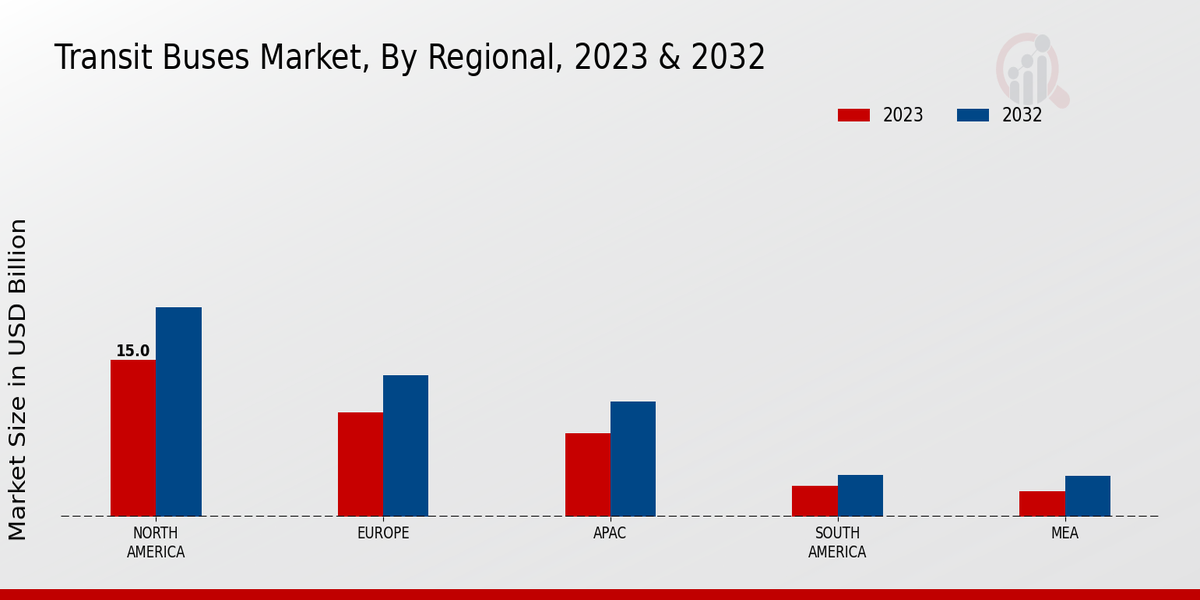Rising Fuel Prices
Rising fuel prices are exerting pressure on the Global Transit Buses Market Industry, prompting a shift towards more fuel-efficient and alternative fuel buses. As traditional fuel costs escalate, transit authorities are compelled to explore options that reduce operational expenses. This trend is particularly evident in urban areas where budget constraints necessitate cost-effective solutions. The adoption of electric and hybrid buses is gaining momentum as they offer lower long-term fuel costs. Consequently, the Global Transit Buses Market is poised for growth as transit agencies prioritize investments in technologies that enhance fuel efficiency and reduce dependency on fossil fuels.
Growing Urbanization
The Global Transit Buses Market Industry is experiencing a notable surge due to increasing urbanization. As cities expand, the demand for efficient public transportation systems rises. Urban areas are projected to house 68 percent of the global population by 2050, necessitating the development of robust transit solutions. This trend is likely to drive investments in transit buses, enhancing their operational efficiency and accessibility. Moreover, the Global Transit Buses Market is expected to reach 41.2 USD Billion in 2024, reflecting the urgent need for sustainable urban mobility solutions. Consequently, municipalities are prioritizing the integration of transit buses into their transportation frameworks.
Environmental Concerns
Environmental concerns are increasingly influencing the Global Transit Buses Market Industry. With growing awareness of climate change and air pollution, there is a pressing need for sustainable transportation solutions. Transit buses, particularly those powered by alternative fuels or electric systems, are viewed as viable options to mitigate environmental impact. Many cities are adopting stringent emission regulations, further propelling the shift towards greener transit options. The Global Transit Buses Market is likely to benefit from this trend, as municipalities invest in cleaner technologies. This focus on sustainability not only addresses environmental challenges but also aligns with the broader goals of urban development and public health.
Market Growth Projections
Technological Advancements
Technological advancements are significantly influencing the Global Transit Buses Market Industry. Innovations such as electric and autonomous buses are reshaping public transportation. Electric buses, in particular, are gaining traction due to their lower operational costs and reduced environmental impact. The integration of smart technologies, including real-time tracking and passenger information systems, enhances the overall user experience. As cities strive for smarter transportation solutions, the demand for technologically advanced transit buses is expected to rise. This trend aligns with the anticipated CAGR of 3.52% from 2025 to 2035, indicating a robust growth trajectory for the market driven by technological innovation.
Government Initiatives and Funding
Government initiatives play a pivotal role in shaping the Global Transit Buses Market Industry. Numerous countries are implementing policies aimed at reducing carbon emissions and promoting public transport. For instance, the Federal Transit Administration in the United States allocates substantial funding for the procurement of electric and hybrid buses. Such initiatives not only enhance the sustainability of transit systems but also stimulate market growth. The Global Transit Buses Market is projected to grow to 60.3 USD Billion by 2035, largely driven by government investments in eco-friendly transit solutions. This underscores the importance of public sector involvement in fostering a greener transportation landscape.
















